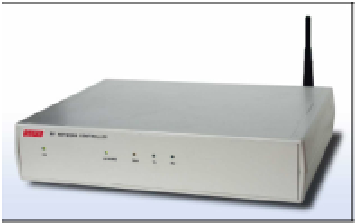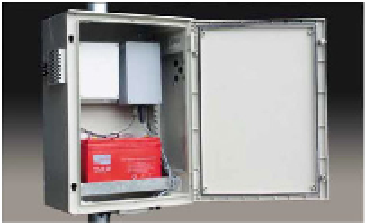Geography Reference
In-Depth Information
between the GPS receiver and the radio modem, and in addition, it supplies diagnostic data
related to the sensor itself.
Figure 3.
Base station
Figure 4.
Waterproof box of the Base Station
It is also important to mention that, for this SAMOS system, it is necessary that, on the
surveyed objectives, to be assured permanent electrical energy supplies (which can be
constituted from photovoltaic panels or, if this is available, from the mains power supply of
the area). In both cases, a backup battery is included. Moreover, we must notice that the
receivers and the system GPS components remains in field in the majority of cases, without
any surveillance from the operators.
The Base Station includes the network controller, used to receive the GPS data collected via
radio links from sensors deployed in the field, and a computer running the software to
process the data and display the results in real-time. The raw measurement data as well as
the results are stored in a database for possible further processing, if required, or simply
archiving. (Caporali A., 2008)
3.1.3. Conclusions referring to the fixed monitoring systems
In addition to collecting the measurement data, the base station can retrieve status
information from the sensors, such as the accumulator supply voltage, RF link signal
strength and temperature.
The Graphic User Interface (GUI) shows the real-time status of the network (satellites
available and being tracked, nominal antenna locations and network geometry, status of
each sensor) and the results of the data analysis as northing, easting and vertical


